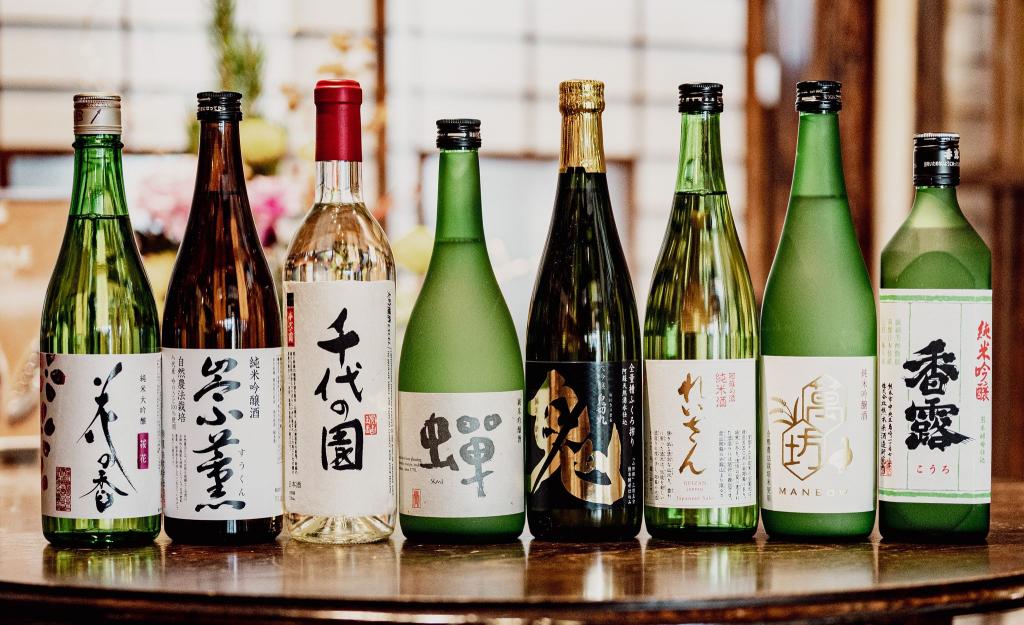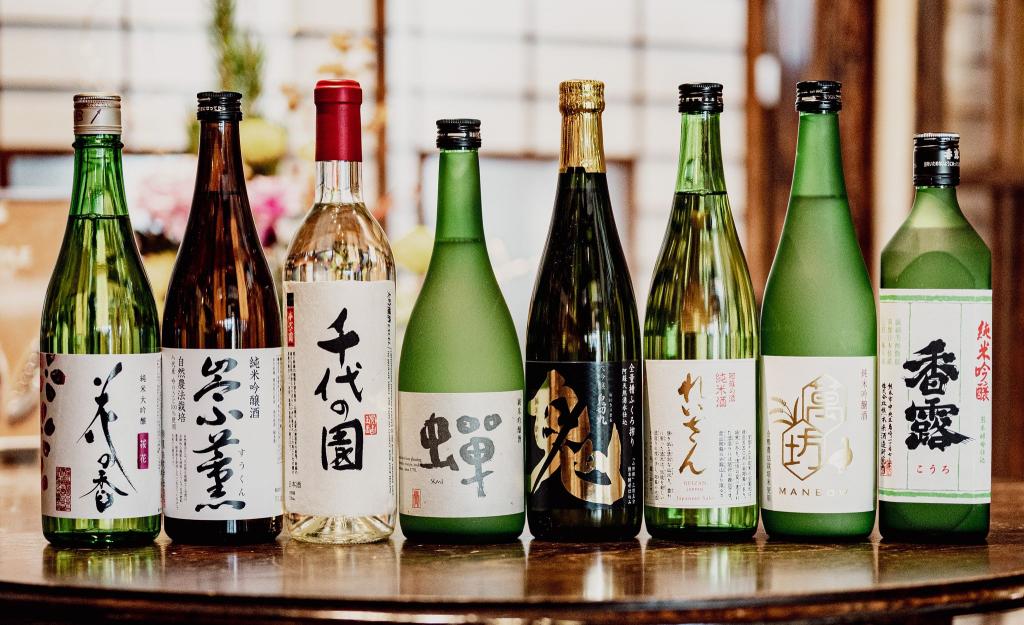When most people think of alcohol in Japan, sake (also called nihonshu) is usually the first thing that comes to mind. But here on the island of Kyushu, a different kind of alcohol called shochu is king. Shochu is a distilled spirit commonly made from potatoes, barley, or rice and is like a more flavorful, weaker cousin of vodka. Kuma Shochu, a variety of rice shochu made in the Kuma Region of southern Kumamoto Prefecture, is especially famous. Sweet potato shochu from Kagoshima and barley shochu from Oita, Miyazaki, and Nagasaki Prefectures on Kyushu are also popular and available all around the world.
Curiously, even with all the shochu culture surrounding it, Kumamoto City has few distilleries. If there are no distilleries, you’d maybe expect there to be a long, strong history of sake in Kumamoto City instead. This isn’t really the case either as sake has only been legal in Kumamoto City for around 150 years.
So what did the thirsty residents of Kumamoto drink in the olden days? And how did Kumamoto end up sparking a nationwide revolution in how sake was made? The answer lies with a little-known drink called akazake.
Akazake – Kumamoto’s Traditional Tipple

Akazake (aka- means “red” and -zake means, well, “sake”) is a kind of fermented alcohol similar to sake in how it is made, but with a higher sugar content and an addition of wood ash as a preservative. What results is a very sweet, syrupy, reddish-brown liqueur that honestly is hard to imagine drinking more than a few sips of. It is still made in Kumamoto, with most of it now being used for cooking as a tastier, more flavorful alternative to mirin. It is also consumed in small amounts during ceremonies and special occasions, such as weddings and on New Year’s Day.

Starting around 1600 when Kato Kiyomasa became lord of Higo (modern-day Kumamoto), the production and import of anything other than akazake was prohibited. This law persisted until around the late 1800s, when the Meiji Restoration and end of Hosokawa rule saw increased exchange within Kumamoto and more sake being brought into the region.
As a result, sake production only really got started in Kumamoto around the turn of the 20th century, and this meant Kumamoto had a lot of catching up to do.
Enter Nojiro Kinichi.
The God of Sake Comes to Kumamoto
Governments have an interesting relationship with alcohol. They feel the need to regulate it and tax it to discourage overconsumption, but they also make a lot of money from taxing alcohol, so there’s something of a love-hate relationship between the two. Nineteenth-century Japan had a very positive relationship with alcohol, so much so that they dispatched a sake expert in 1903 to the Kumamoto Tax Office to teach people here how to make good sake, thereby increasing consumption and tax revenue.

This man’s name was Nojiro Kinichi. It was his job to whip Kumamoto brewers into shape and train them up to the same level as brewers from elsewhere in Japan who had been making sake for centuries.
And whip them into shape he did. He helped organize the Kumamoto Prefecture Sake Institute in 1909. This was where locals brewers could come and learn, share knowledge, and get better at making sake.
And whip them into shape he did. He helped organize the Kumamoto Prefecture Sake Institute in 1909. This was where locals brewers could come and learn, share knowledge, and get better at making sake.

One thing Nojiro had to overcome was Kumamoto’s climate. Sake requires cold temperatures for proper fermentation, and being a lot further south than most breweries meant Kumamoto brewers needed to adapt their methods to the higher temperatures here. In addition to a number of technological advancements, Nojiro isolated a new strain of yeast that would be known as “Kumamoto Yeast.”

Kumamoto Yeast can make sake at lower temperatures, but it also makes good ginjo sakes (sake made with highly polished rice that tend to be aromatic and fruity) with low acidity in warmer temperatures. This paired with new brewing techniques allowed brewers throughout Japan to make more fragrant, flavorful sakes and ushered in an era of high-quality ginjo sake. This style of sake was also easier for wine drinkers to understand and helped kick off an explosion in interest in sake overseas.
Kumamoto Yeast is now the second most common yeast used for sake, which is pretty impressive considering Kumamoto’s only been making sake for a little over a hundred years.
Now that we know about the history of sake in Kumamoto, let’s take a look at one of the breweries that was integral in Kumamoto’s sake history: Zuiyo.
Zuiyo – Where Kumamoto City Sake Began
I met with Kentaro Yoshimura, vice-president of Zuiyo Brewery (瑞鷹) in the Kawashiri area of Kumamoto City to learn about the history of sake in Kumamoto.

Zuiyo was founded in 1867 and likely started out producing akazake. Records are incomplete, but Zuiyo may have been the first nihonshu brewery in the former Higo domain. Initial attempts had issues with quality due to lack of experience, but the arrival of Nojiro-sensei helped things improve. Nojiro-sensei actually founded the Kumamoto Prefecture Sake Institute on the grounds of Zuiyo before it later moved to its current location in the Shimasaki neighborhood of Kumamoto City.

Kentaro showed me around the large facility during the peak of sake brewing season in the winter. Zuiyo actually has two factories in Kawashiri, both of which are a curious blend of the old and the new.

We started with a look at the polished rice that was waiting to be steamed.

Enormous machinery polishes the rice down to the size required for the style of sake being produced. The rice is then steamed, some of which is used to make the koji, or brewing starter, and the rest is added later as the fuel for fermentation.

The key to Zuiyo’s sake is the brewing water it draws from an on-site well. Kumamoto City is famous for is bountiful groundwater resources, and one benefit of this is excellent sake.
The brewery is filled with old buildings and memorabilia, like this vintage wooden sign.

In addition to sake, Zuiyo also makes shochu and traditional Kumamoto akazake. A showroom and tasting area is located at the brewery’s Tohi Taisho-gura, which is just a 5-minute walk from Kawashiri Station.
Kawakami Saketen – Sake from All Breweries in the Prefecture, Plus Plenty More

If you’re in the city and looking to buy some Kumamoto sake, Kawakami Saketen offers one of the best selections. The owner, Yasushi Kawakami, is very friendly and extremely passionate and knowledgeable about sake.

Here is a lineup of one sake from each brewery in Kumamoto Prefecture. From left: Hananoka, Zuiyo, Chiyonosono, Tuzyun, Kawazu, Yamamura (Reizan), Kameman, Kumamoto Prefecture Sake Institute.

I asked Kawakami-san what makes Kumamoto sake different, and he responded with something I thought was interesting. In the eastern regions of Japan with a long history of sake-making, they make excellent sake but tend to stick with what they know best. Having a short history like Kumamoto has freed it from the shackles of tradition and gifted brewers here the freedom to experiment. What resulted is many interesting sakes made using a wide variety of brewing methods.
If you’re interested in sake and want to try something a little different, try a couple sakes from Kumamoto the next time you’re in town. They’re readily available at local liquor stores, supermarkets, and izakayas throughout the city. If you’re at Kumamoto Station and looking to pick up a bottle, check out Ushijima Saketen in our post on shopping at Kumamoto Station. Whatever you get, you’ll know the big part Kumamoto sake played in making sake what it is today.
Zuiyo Tohi Taisho-gura
Address: Kawashiri 1-chome 3-72, Minami Ward, Kumamoto City
Hours: Open every day, 10:00-17:00 (except around New Year’s)
Kawakami Saketen
Address: Yorozumachi 2-chome 3, Chuo Ward, Kumamoto City
Hours: 9:00-19:00 (check Instagram for schedule)
Instagram: https://www.instagram.com/kawakamisaketen/


